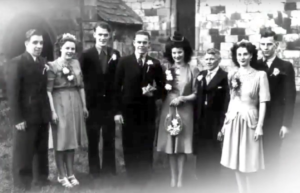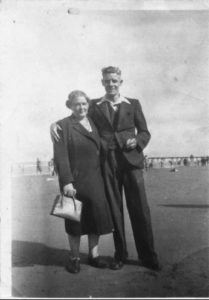


Genealogical DNA Testing - Is It Worth It?
Read to the end for our experience.
A genealogical DNA test is a DNA-based test used in genetic genealogy that looks at specific locations of a person's genome in order to find or verify ancestral genealogical relationships, or (with lower reliability) to estimate the ethnic mixture of an individual. Since different testing companies use different ethnic reference groups and different matching algorithms, ethnicity estimates for an individual vary between tests, sometimes dramatically.
Three principal types of genealogical DNA tests are available, with each looking at a different part of the genome and being useful for different types of genealogical research: autosomal (atDNA), mitochondrial (mtDNA), and Y-DNA.
Autosomal tests may result in a large number of DNA matches to both males and females who have also tested with the same company. Each match will typically show an estimated degree of relatedness, i.e., a close family match, 1st-2nd cousins, 3rd-4th cousins, etc. The furthest degree of relationship is usually the "6th-cousin or further" level. However, due to the random nature of which, and how much, DNA is inherited by each tested person from their common ancestors, precise relationship conclusions can only be made for close relations. Traditional genealogical research, and the sharing of family trees, is typically required for interpretation of the results. Autosomal tests are also used in estimating ethnic mix.
MtDNA and Y-DNA tests are much more objective. However, they give considerably fewer DNA matches, if any (depending on the company doing the testing), since they are limited to relationships along a strict female line and a strict male line respectively. MtDNA and Y-DNA tests are utilized to identify archeological cultures and migration paths of a person's ancestors along a strict mother's line or a strict father's line. Based on MtDNA and Y-DNA, a person's haplogroup(s) can be identified. The mtDNA test can be taken by both males and females, because everyone inherits their mtDNA from their mother, as the mitochondrial DNA is located in the egg cell. However, a Y-DNA test can only be taken by a male, as only males have a Y-chromosome.
Procedure
How to obtain genotypes from spit. The video shows the process of extracting genotypes from a human spit sample using a DNA microarray, which is the most common method used in genetic genealogy.
A genealogical DNA test is performed on a DNA sample obtained by cheek-scraping (also known as a buccal swab), spit-cups, mouthwash, or chewing gum. Typically, the sample collection uses a home test kit supplied by a service provider such as 23andMe, AncestryDNA, Family Tree DNA, or MyHeritage. After following the kit instructions on how to collect the sample, it is returned to the supplier for analysis. The sample is then processed using a technology known as DNA microarray to obtain the genetic information.
This information was supplied by: Wikipedia.org Where more information can be found.
Our Experience
Both my wife and I have had a DNA Test. We found the test simple to take. We then posted the samples and the results were returned to us a few weeks later. Easy and without fuss. We'd recommend it to anyone.
Was it Worth it?
Absolutely! The results told us a lot about where our ancestors came from. We found many family contacts we knew nothing about, which has made our research much more interesting.
And yes, there were some family skeletons in the cupboard! Which of course leads to more research... It never ends but it keeps you busy.
Carol and I used the Ancestry.com test as we subscribe to them but there are many other providers of the DNA Test available.
